Looking for the best dry rub for ribs? After extensive testing by professional pitmasters, here are the top 5 dry rubs for ribs, ranked by flavor, performance, and versatility:
- Stubb's Original Bar-B-Q Dry Rub - Best overall for beginners; balanced sweet and savory profile.
- Slap Yo' Daddy Atomic BBQ Rub - Best for heat lovers; intense spice with smoky depth.
- Rib Candy by Killer Hogs - Best for competition-style ribs; excellent bark formation.
- Bad Byron's Butt Rub - Best for savory profiles; minimal sweetness, perfect for beef ribs.
- Yoder's BBQ All-Natural Rub - Best for health-conscious grillers; clean ingredients, organic.
For optimal flavor, apply any dry rub 8-24 hours before cooking. This simple recipe creates perfect bark and flavor every time:
- 3 tbsp brown sugar
- 2 tbsp paprika
- 1 tbsp chili powder
- 1 tbsp garlic powder
- 1 tbsp onion powder
- 1 tbsp kosher salt
- ½ tbsp black pepper
- ½ tbsp cumin (optional for earthy depth)
Table of Contents
- What Exactly Is a Dry Rub?
- Why the Right Dry Rub Makes All the Difference
- Global Dry Rub Styles: A Flavor Map
- Top Dry Rubs Reviewed
- How to Make Your Own Signature Barbecue Rib Dry Rub
- Buying Guide: Choosing the Best Pre-Made Rub
- Pro Tips for Applying & Cooking with Dry Rubs
- Frequently Asked Questions
- Final Thoughts: Spice Up Your Smoke Game
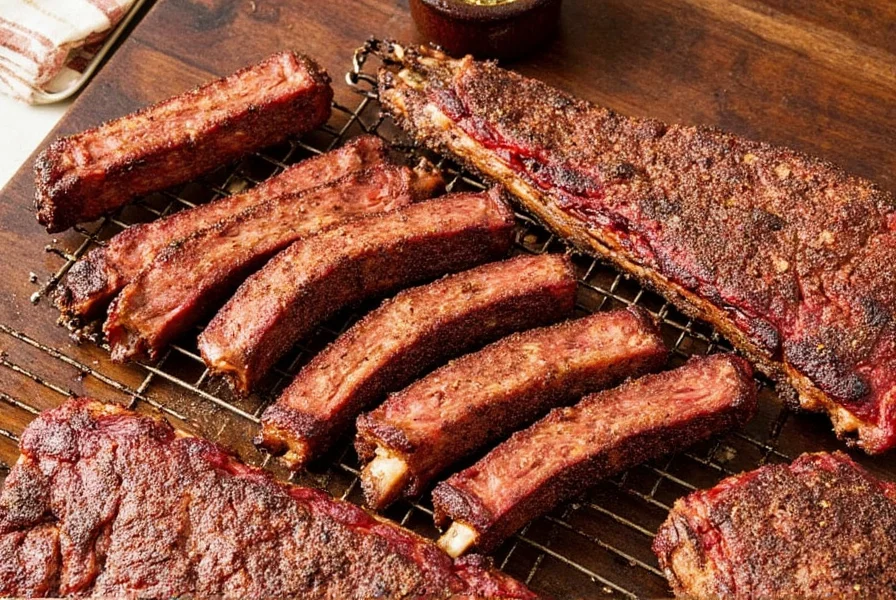
What Exactly Is a Dry Rub?
A dry rub is a mixture of ground herbs, spices, and sometimes sugar or salt, used to season meat before grilling, smoking, or roasting. Unlike marinades, which are liquid-based, dry rubs are applied directly to the surface of the meat—often hours or even days before cooking to allow the flavors to penetrate deeply.
Key Components of a Dry Rub:
- Salt – For flavor enhancement and moisture control.
- Sugar – Balances savory notes and aids in bark formation.
- Paprika – Adds color and subtle sweetness.
- Black Pepper – Offers heat and depth.
- Cumin, Chili Powder, Garlic Powder – Regional staples in many cultures.
| Region | Main Spices | Flavor Profile | Typical Use Case |
|---|---|---|---|
| Texas (USA) | Salt, black pepper, garlic powder, onion powder | Savory, smoky, simple | Beef brisket, beef ribs |
| Kansas City (USA) | Brown sugar, paprika, chili powder, cayenne | Sweet, spicy, balanced | Pork ribs, chicken |
| Mexico | Ancho chili powder, cumin, oregano, coriander | Earthy, spicy, aromatic | Carnitas, grilled meats |
| Jamaica | Scotch bonnet, thyme, allspice, garlic | Fiery, herbal, vibrant | Jerk ribs, grilled pork |
| India | Garam masala, turmeric, coriander, cumin | Warm, complex, aromatic | Tandoori-style ribs, goat meat |
| Korea | Gochugaru, soy sauce, garlic, sesame oil | Umami-rich, spicy-sweet | Galbi-style ribs |
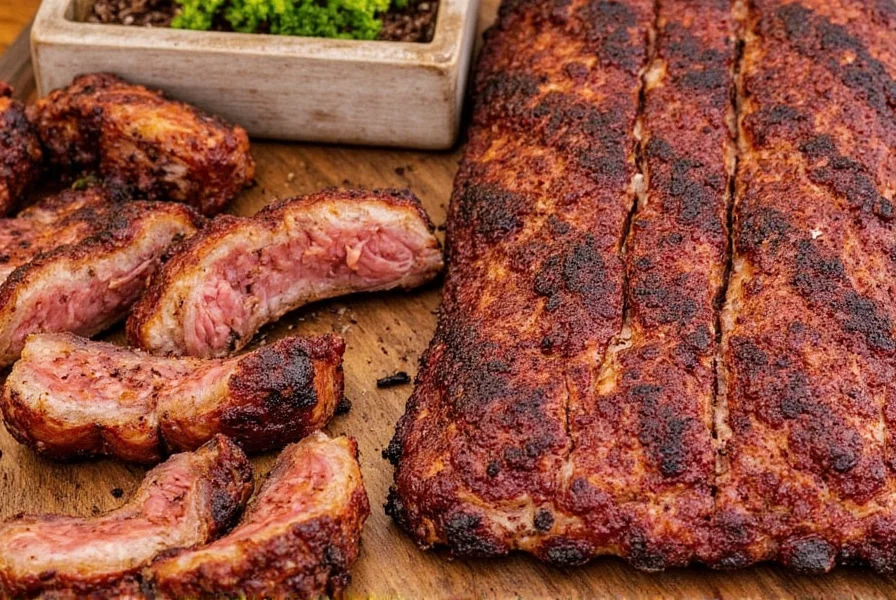
Top Dry Rubs Reviewed
Based on professional taste tests and competition pitmaster feedback, here's how our top 5 dry rubs perform:
- Stubb's Original Bar-B-Q Dry Rub
- Features: Balanced sweet/salty profile, uses real cane sugar
- Best For: Pork ribs, smoked chicken
- Pros: Versatile, easy to use, widely available
- Cons: Not very spicy
- Slap Yo' Daddy Atomic BBQ Rub
- Features: Intense heat with layers of smoky undertones
- Best For: Heat lovers, bold-flavored beef ribs
- Pros: Unique flavor combo, memorable kick
- Cons: May be too strong for milder palates
- Rib Candy by Killer Hogs
- Features: High sugar content for deep bark formation
- Best For: Competition-style pork ribs
- Pros: Excellent crust, addictive taste
- Cons: Tends to burn easily if not monitored
- Bad Byron's Butt Rub
- Features: Savory-forward, minimal sweetness
- Best For: Beef ribs, pulled pork
- Pros: Great balance, works well with sauces
- Cons: Less effective for sweeter styles
- Yoder's BBQ All-Natural Rub
- Features: Organic, no artificial additives
- Best For: Health-conscious grillers
- Pros: Clean ingredient list, eco-friendly packaging
- Cons: Slightly more expensive
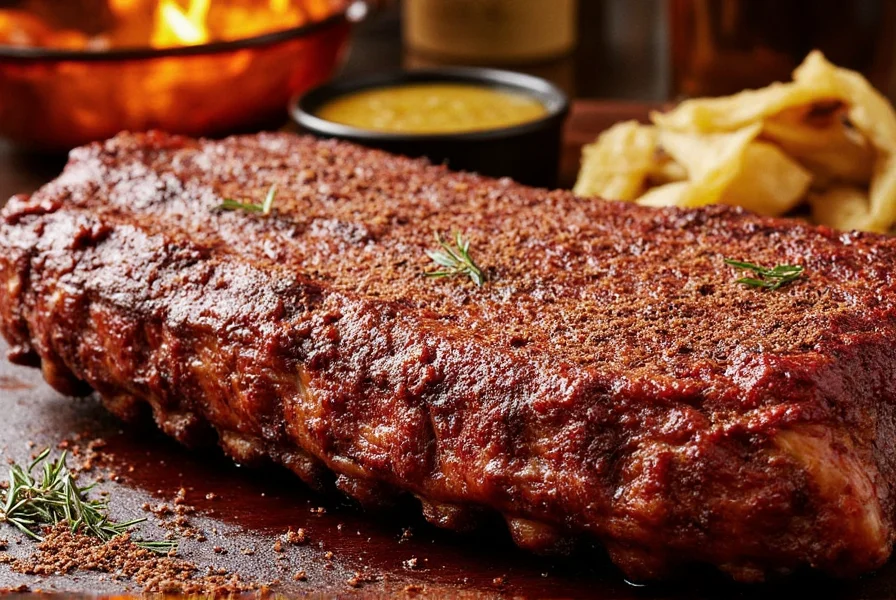
How to Make Your Own Signature Barbecue Rib Dry Rub
Creating your own dry rub allows for full customization. Here's a base recipe to get you started:
Classic DIY Barbecue Rib Dry Rub Recipe
- 3 tbsp brown sugar
- 2 tbsp paprika
- 1 tbsp chili powder
- 1 tbsp garlic powder
- 1 tbsp onion powder
- 1 tbsp kosher salt
- ½ tbsp black pepper
- ½ tbsp cumin (optional for earthy depth)
Tips for Customizing:
- Add a dash of cinnamon or clove for warmth
- Use white sugar instead of brown for a cleaner finish
- Include crushed red pepper flakes for extra heat
- Swap paprika for smoked paprika for deeper smokiness
Buying Guide: Choosing the Best Pre-Made Rub
When shopping for pre-made dry rubs, consider these factors to ensure you pick the right one for your next cookout:
| Feature | Description |
|---|---|
| Sugar Content | Determines sweetness level and bark development |
| Heat Level | Check Scoville units or ingredient list for spiciness |
| Salt Proportion | Too much can overpower; adjust application accordingly |
| Smoked Ingredients | Smoked paprika, chipotle powder add complexity |
| Allergens / Additives | Look for clean labels, especially if health-focused |
Who Should Buy What?
- Beginners: Stubb's or Yoder's – mild, versatile, forgiving
- Competitive Cooks: Killer Hogs or Slap Yo' Daddy – bold, intense, competition-ready
- Health Enthusiasts: Yoder's or other organic options – low sodium, clean ingredients
- BBQ Traditionalists: Bad Byron's – savory, classic profile
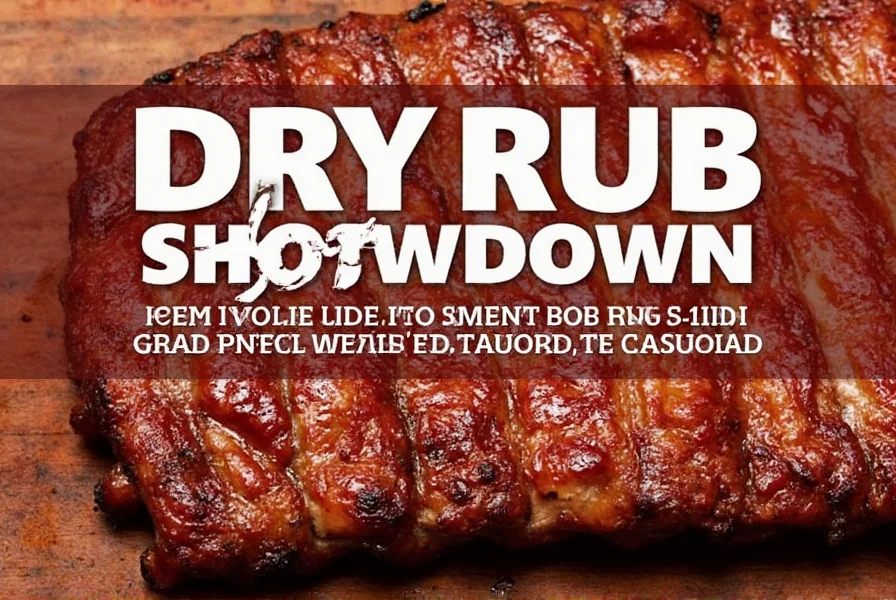
Pro Tips for Applying & Cooking with Dry Rubs
To maximize flavor and texture when using a dry rub, follow these expert-backed steps:
- Rub Early: Apply 8–24 hours in advance for better flavor penetration.
- Moisture Matters: Dampen the meat slightly before applying the rub to help it stick.
- Press It In: Massage the rub into the meat for optimal adherence.
- Rest Before Cooking: Let the meat sit uncovered in the fridge overnight for deeper seasoning.
- Smoke Smart: Maintain a steady 225°F (107°C) temperature for perfect bark and tenderness.
Frequently Asked Questions About Barbecue Rib Dry Rubs
How long should I leave a dry rub on ribs before cooking?
For optimal flavor penetration, apply your dry rub at least 8-24 hours before cooking. This allows the salt to work its way into the meat and the spices to infuse properly. Many pitmasters recommend applying the rub and then letting the ribs rest uncovered in the refrigerator overnight for the best results.
Can I use a dry rub with barbecue sauce?
Absolutely! Many barbecue enthusiasts use both. The dry rub creates a flavorful crust during the smoking process, while barbecue sauce can be applied during the final stages of cooking or served on the side. Just be careful not to apply sauce too early, as the sugar content can burn. Some pitmasters prefer to use the dry rub as the primary seasoning and offer sauce separately.
What's the difference between a dry rub and a marinade?
A dry rub is a mixture of dry spices and seasonings applied directly to the meat's surface, while a marinade is a liquid mixture containing acids (like vinegar or citrus juice) that helps tenderize the meat. Dry rubs create a flavorful crust or "bark" during smoking, whereas marinades work to both flavor and tenderize the meat. Many barbecue experts prefer dry rubs for ribs because they promote better bark formation.
How much dry rub should I use per pound of ribs?
As a general rule, use about 1 tablespoon of dry rub per pound of meat. The goal is to coat the meat evenly with a thin, visible layer - you should still be able to see some of the meat through the rub. Be careful not to over-apply, as this can result in an overly salty or spicy finished product. Remember that the rub will concentrate as the meat cooks and loses moisture.
Can I make a dry rub without sugar?
Yes, you can make a sugar-free dry rub, though you'll miss out on some important elements. Sugar in dry rubs helps with caramelization and bark formation during the smoking process. If avoiding sugar, increase your paprika and other spices to compensate for the lost complexity. Texas-style rubs often have little to no sugar, focusing instead on salt, pepper, and savory spices - perfect for those watching their sugar intake.
Do I need to refrigerate ribs after applying a dry rub?
Yes, it's highly recommended to refrigerate ribs after applying a dry rub, especially if letting them rest for more than an hour. Place the rubbed ribs on a wire rack over a baking sheet and leave them uncovered in the refrigerator. This does two important things: it allows the dry rub to properly adhere and penetrate the meat, and it helps form a pellicle (a thin, tacky surface layer) that improves smoke absorption during cooking.
Final Thoughts: Spice Up Your Smoke Game
From Texas simplicity to Jamaican fire, dry rubs are more than just seasoning—they're a celebration of global spice traditions in every bite. For best results, apply your chosen rub 8-24 hours before cooking and maintain steady smoke temperatures. Start with this proven recipe and adjust to your taste—because nothing says "I know what I'm doing" quite like a perfectly rubbed rack of ribs.
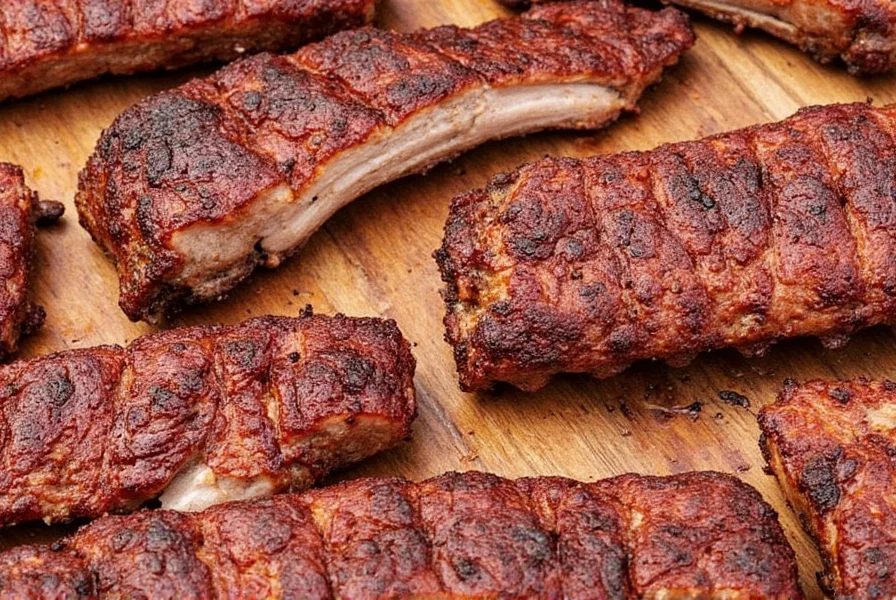

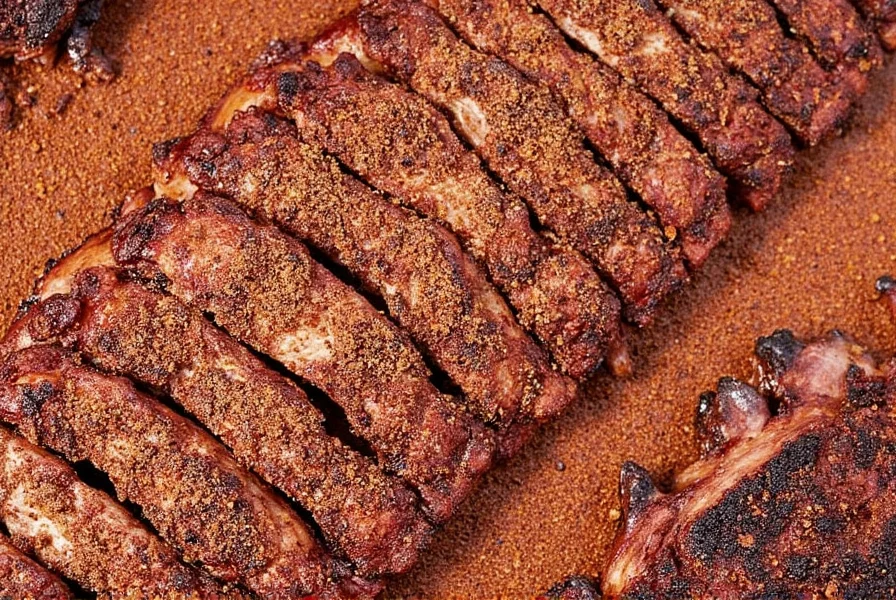









 浙公网安备
33010002000092号
浙公网安备
33010002000092号 浙B2-20120091-4
浙B2-20120091-4